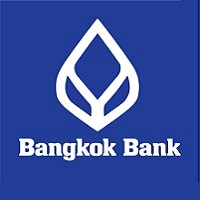 Bangkok Bank has deployed a solution that integrates and consolidates anti-money laundering (AML) processes across its 300 branches worldwide. Developed together with tech company SAS, the AML solution leverages SAS Anti-Money Laundering to establish a global standard of compliance, crossing 14 economies that include eight other Southeast Asian markets, among them China, Hong Kong, Japan, Taiwan, the United Kingdom, and the United States.
Bangkok Bank has deployed a solution that integrates and consolidates anti-money laundering (AML) processes across its 300 branches worldwide. Developed together with tech company SAS, the AML solution leverages SAS Anti-Money Laundering to establish a global standard of compliance, crossing 14 economies that include eight other Southeast Asian markets, among them China, Hong Kong, Japan, Taiwan, the United Kingdom, and the United States.
To develop the AML solution, both Bangkok Bank and SAS collaborated to replace the bank’s legacy systems with more advanced analytics tools. The project involved auditing each location’s regulatory needs and banking activities and incorporating global best practices and guidelines. The audit yielded the most comprehensive and relevant list of business requirements and helped define minimum AML standards for the bank in its entirety.
The bank had to make several changes during the development of the solution. This included having new resources and data sources, as well as new ways of working among compliance, business, and IT. The bank instituted a strong data team to ensure the model functions effectively. A skilled technical team operates data extract, transport, and load tools to give enough focus for datamapping exercises.
These joint efforts culminated in a SAS AML Global Image, which was piloted at the bank’s Hong Kong operations and later rolled out globally. The Global Image enables Bangkok Bank to apply a more advanced, score-based approach to risk-rate its customers. The bank can apply scenarios and risk factors to detect potential suspicious activity against threshold values specific to each segment based on customer type, risk level, and product.
With the global solution implemented, AML risk management and decisions are strengthened by a standardized AML case investigation workflow across all global operations, helping ensure fully AML-compliant client services worldwide.
The AML solution met the functional, process, and technical-related requirements set by the bank through its analytics brokered risk mitigation, which in turn strengthens the bank’s AML capabilities with more advanced analytics techniques. Integrated AML and customer due diligence case management workflow capabilities have also enabled bank staff to improve their productivity, reducing case resolution times.
Techwire Asia


Leave a Reply